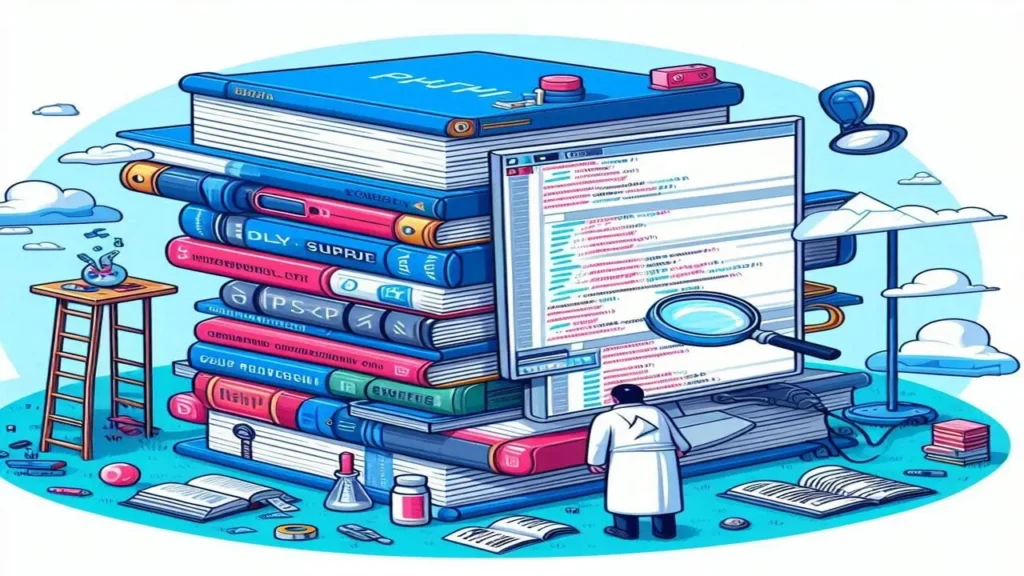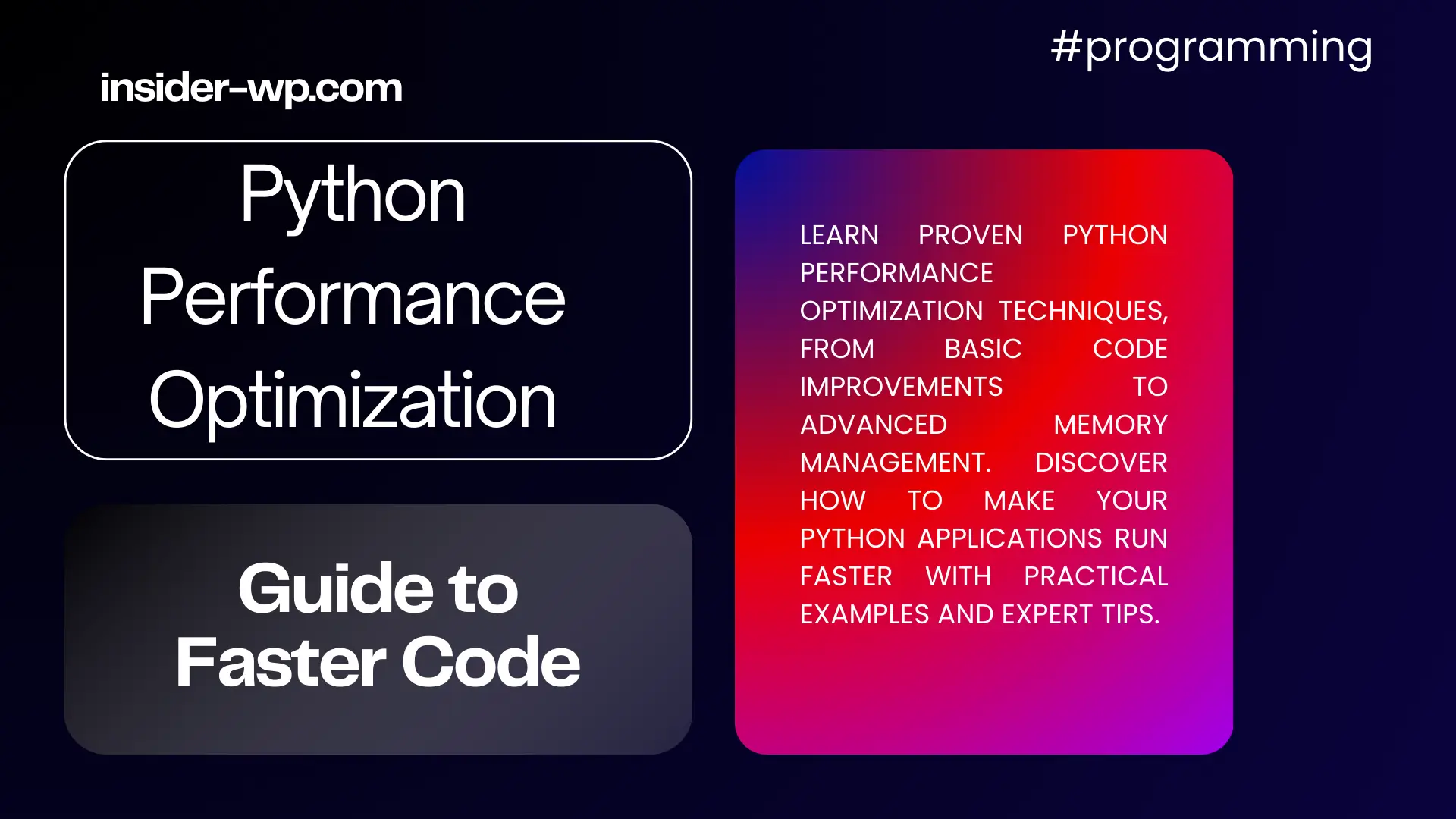PHP Frameworks: Guide for Successful Development

In the ever-evolving landscape of web development, PHP frameworks have emerged as indispensable tools for developers of all skill levels. These powerful platforms serve as the backbone for countless websites and applications, streamlining the development process and enabling the creation of robust, scalable, and secure web solutions. As we delve into the world of PHP frameworks in 2024, it’s crucial to understand their significance, evolution, and the impact they continue to have on the web development industry.
Definition of PHP frameworks

PHP frameworks are pre-built libraries of code that provide developers with a structured foundation for building web applications. They offer a set of reusable components, tools, and conventions that simplify the development process, allowing programmers to focus on creating unique features rather than reinventing the wheel for common functionalities.
PHP frameworks follow the Model-View-Controller (MVC) architectural paradigm, which divides an application’s logic into three interconnected components:
- Model: Manages data and business logic
- View: Handles the presentation layer and user interface
- Controller: Acts as an intermediary between the Model and View, processing user input and managing application flow
This separation of concerns promotes code organization, maintainability, and scalability, making PHP frameworks an essential tool for modern web development.
Importance of PHP frameworks in modern web development

The significance of PHP frameworks in today’s web development landscape cannot be overstated. They offer numerous benefits that contribute to more efficient, secure, and maintainable web applications:
- Rapid development: By providing pre-built components and libraries, PHP frameworks significantly reduce development time, allowing developers to create complex applications more quickly.
- Code reusability: Frameworks encourage the use of reusable code, reducing redundancy and promoting DRY (Don’t Repeat Yourself) principles.
- Enhanced security: Most PHP frameworks come with built-in security features, helping developers protect their applications against common vulnerabilities like SQL injection and cross-site scripting (XSS).
- Scalability: Frameworks are designed to handle growth, making it easier to scale applications as user bases and requirements expand.
- Community support: Popular PHP frameworks benefit from large, active communities that provide support, documentation, and continuous improvements.
- Best practices: Frameworks enforce coding standards and best practices, leading to cleaner, more maintainable code.
- Integration capabilities: Many frameworks offer easy integration with third-party tools and services, expanding functionality without reinventing the wheel.
According to a 2023 JetBrains survey, 87% of PHP developers use frameworks in their projects, highlighting their widespread adoption and importance in the industry.
Brief history of PHP frameworks

The history of PHP frameworks is intertwined with the evolution of PHP itself. As PHP gained popularity in the late 1990s and early 2000s, developers began to recognize the need for more structured approaches to web application development. This led to the emergence of the first PHP frameworks.
Here’s a brief timeline of some key milestones in PHP framework history:
- 2005: CakePHP, one of the earliest PHP frameworks, is released
- 2006: CodeIgniter makes its debut, focusing on simplicity and performance
- 2007: Zend Framework (now Laminas Project) is introduced by Zend Technologies
- 2011: Laravel, which would become one of the most popular PHP frameworks, is first released
- 2012: Phalcon, a high-performance framework written in C, is introduced
- 2015: Symfony 3.0 is released, marking a significant evolution in the framework’s development
The history of PHP frameworks is intertwined with the evolution of PHP itself. As PHP gained popularity in the late 1990s and early 2000s, developers began to recognize the need for more structured approaches to web application development. This led to the emergence of the first PHP frameworks.
Here’s an interactive timeline showcasing some key milestones in PHP framework history:
Evolution of PHP Frameworks
CakePHP
One of the earliest PHP frameworks is released
CodeIgniter
Makes its debut, focusing on simplicity and performance
Zend Framework
Introduced by Zend Technologies (now Laminas Project)
Laravel
First released, would become one of the most popular PHP frameworks
Phalcon
A high-performance framework written in C is introduced
Symfony 3.0
Released, marking a significant evolution in the framework’s development
As we can see from the timeline, PHP frameworks have continued to evolve over the years, adapting to new programming paradigms, improving performance, and expanding their feature sets to meet the changing needs of web developers.
Over the years, PHP frameworks have continued to evolve, adapting to new programming paradigms, improving performance, and expanding their feature sets to meet the changing needs of web developers.
Overview of Category: PHP Frameworks on Wikipedia

The Wikipedia category for PHP Frameworks serves as a comprehensive resource for developers seeking information about various PHP frameworks. This category includes pages dedicated to individual frameworks, subcategories for specific types of frameworks, and related topics within the PHP ecosystem.
Key aspects of the Wikipedia PHP Frameworks category include:
- Framework listings: Detailed pages for major PHP frameworks such as Laravel, Symfony, and CodeIgniter
- Subcategories: Classifications for different types of frameworks, such as MVC frameworks or micro-frameworks
- Historical context: Information on the evolution of PHP frameworks and their impact on web development
- Comparison articles: Pages that compare features, performance, and use cases of different frameworks
- Related technologies: Links to pages about associated technologies and concepts in PHP development
For developers and researchers, this Wikipedia category serves as a valuable starting point for understanding the breadth and depth of PHP frameworks available in the market.
As we continue our exploration of PHP frameworks, we’ll delve deeper into their functionalities, compare popular options, and provide guidance on choosing the right framework for your projects. Stay tuned as we uncover the power and potential of PHP frameworks in modern web development.
Understanding PHP Frameworks

What are PHP frameworks?
PHP frameworks are pre-written, reusable sets of code that provide a structured foundation for developing web applications using PHP. These frameworks offer a standardized way to build and deploy web applications, following established design patterns and best practices in software development.
At their core, PHP frameworks aim to simplify the development process by:
- Providing a skeleton structure for applications
- Offering pre-built components for common tasks
- Implementing proven design patterns, such as Model-View-Controller (MVC)
- Enforcing coding standards and conventions
According to W3Techs, PHP is used by 77.4% of all websites with a known server-side programming language, making PHP frameworks an essential tool in the web development ecosystem.
How do PHP frameworks work?
PHP frameworks typically operate on the following principles:
- Request Handling: When a user makes a request to a web application, the framework’s routing system directs the request to the appropriate controller.
- MVC Architecture: Most PHP frameworks implement the Model-View-Controller pattern:
- Model: Manages data and business logic
- View: Handles the presentation layer
- Controller: Processes user input and manages application flow
- Database Abstraction: Frameworks often include Object-Relational Mapping (ORM) tools to simplify database interactions.
- Template Engine: Many frameworks provide a templating system to separate PHP code from HTML, improving maintainability.
- Security Features: Built-in security measures protect against common vulnerabilities like SQL injection and cross-site scripting (XSS).
- Caching Mechanisms: Frameworks often include caching systems to improve application performance.
Here’s a simplified diagram of how a typical PHP framework processes a request:
User Request -> Router -> Controller -> Model <-> Database
-> View -> Response to UserBenefits of using PHP frameworks
Adopting a PHP framework offers numerous advantages for developers and businesses alike:
- Rapid Development: Pre-built components and libraries significantly reduce development time.
- Code Reusability: Frameworks promote the use of reusable code, reducing redundancy.
- Enhanced Security: Built-in security features protect against common web vulnerabilities.
- Scalability: Frameworks are designed to handle growth and increased load.
- Community Support: Popular frameworks have large, active communities providing support and resources.
- Best Practices: Frameworks enforce coding standards and architectural best practices.
- Simplified Maintenance: Structured codebase makes long-term maintenance easier.
- Improved Collaboration: Standardized structure facilitates teamwork and knowledge sharing.
- Database Abstraction: ORMs simplify database operations and support multiple database systems.
- Testing Integration: Many frameworks include tools for unit testing and test-driven development.
According to a 2021 JetBrains survey, 90% of PHP developers use frameworks, highlighting their widespread adoption and perceived benefits.
Common features of PHP frameworks
While PHP frameworks can vary in their specific implementations, most share a set of common features:
- Routing: URL mapping to controller actions
- ORM (Object-Relational Mapping): Simplifies database interactions
- Template Engine: Separates business logic from presentation
- Caching: Improves application performance
- Security Features: Protection against common vulnerabilities
- Authentication and Authorization: User management and access control
- Form Validation: Simplifies input validation and error handling
- Database Migration Tools: Manages database schema changes
- Command-Line Interface (CLI): For tasks automation and management
- Testing Tools: Supports unit testing and test-driven development
- Asset Management: Handles CSS, JavaScript, and other static assets
- Logging: Records application events and errors
Subcategories within PHP Frameworks Category on Wikipedia
The PHP Frameworks category on Wikipedia is organized into several subcategories, reflecting the diversity and specialization within the PHP framework ecosystem:
- MVC Frameworks: Frameworks that implement the Model-View-Controller pattern
- Examples: Laravel, Symfony, CodeIgniter
- Micro-frameworks: Lightweight frameworks for small applications or APIs
- Examples: Slim, Lumen, Silex
- Content Management Frameworks: Frameworks specifically designed for content management systems
- Examples: TYPO3, Drupal
- E-commerce Frameworks: Specialized frameworks for building online stores
- Examples: Magento, PrestaShop
- RESTful API Frameworks: Frameworks optimized for building RESTful web services
- Examples: Phalcon, Yii
- Full-stack Frameworks: Comprehensive frameworks that provide end-to-end solutions
- Examples: Laravel, Symfony
- Component-based Frameworks: Frameworks that emphasize modular, reusable components
- Example: Laminas Project (formerly Zend Framework)
These subcategories help developers navigate the vast landscape of PHP frameworks and choose the most appropriate tool for their specific project requirements.
For a comprehensive list of PHP frameworks, you can refer to the PHP Framework Interop Group (PHP-FIG), which aims to advance the interoperability of PHP frameworks and promote coding standards.
Understanding the fundamentals of PHP frameworks, their benefits, and common features is crucial for developers looking to leverage these powerful tools in their web development projects. As we continue our exploration, we’ll delve deeper into specific frameworks, their unique characteristics, and how to choose the right one for your needs.
Why You Should Use PHP Frameworks

PHP frameworks have become an integral part of modern web development, offering a myriad of benefits that make them indispensable for projects of all sizes. Let’s explore the key reasons why you should consider using PHP frameworks for your next web application.
Saves development time
One of the most significant advantages of using PHP frameworks is the substantial time savings they offer during the development process. Here’s how frameworks help developers work more efficiently:
- Pre-built components: Frameworks provide a wealth of ready-to-use components, such as authentication systems, database abstraction layers, and form validation tools. This eliminates the need to code these common features from scratch.
- Code generation tools: Many frameworks, like Laravel’s Artisan and Symfony’s Console, offer command-line tools that can generate boilerplate code, models, and controllers automatically.
- Standardized project structure: Frameworks impose a consistent project structure, making it easier for developers to navigate and organize their code.
- Built-in libraries: Most frameworks come with extensive libraries that handle common tasks, reducing the time spent on implementing basic functionalities.
According to a study by Accenture, using a PHP framework can reduce development time by up to 30-40% compared to writing vanilla PHP code.
Promotes good coding practices
PHP frameworks encourage developers to adhere to best practices and established design patterns, resulting in cleaner, more maintainable code:
- MVC architecture: The Model-View-Controller pattern, implemented by most frameworks, promotes a clear separation of concerns in the application structure.
- DRY principle: Frameworks facilitate code reuse, adhering to the “Don’t Repeat Yourself” principle.
- SOLID principles: Many frameworks are designed with SOLID principles in mind, encouraging better object-oriented programming practices.
- Coding standards: Frameworks often come with built-in coding standards, ensuring consistency across projects and team members.
For example, Laravel follows the PSR-12 coding standard, which helps maintain a consistent code style throughout the project.
Enhances collaboration
PHP frameworks significantly improve collaboration among development team members:
- Shared knowledge: By using a common framework, team members can leverage shared knowledge and expertise.
- Consistent structure: The standardized project structure makes it easier for developers to understand and work on different parts of the application.
- Version control integration: Most frameworks are designed to work seamlessly with version control systems like Git, facilitating collaborative development.
- Documentation: Popular frameworks often have extensive documentation and community resources, making it easier for new team members to get up to speed.
A survey by StackOverflow found that frameworks like Laravel and Symfony are among the most loved web frameworks, indicating high developer satisfaction and ease of collaboration.
Improves security
Security is a critical concern in web development, and PHP frameworks offer robust features to protect applications from common vulnerabilities:
- Input validation: Frameworks provide tools for validating and sanitizing user input, reducing the risk of SQL injection and XSS attacks.
- CSRF protection: Many frameworks include built-in protection against Cross-Site Request Forgery attacks.
- Authentication and authorization: Frameworks often offer pre-built authentication systems and role-based access control.
- Security updates: Popular frameworks have active communities that quickly address and patch security vulnerabilities.
For instance, Laravel includes features like automatic CSRF protection and encrypted cookies out of the box, enhancing application security with minimal effort from developers.
Facilitates scalability and maintenance
PHP frameworks are designed with scalability and long-term maintenance in mind:
- Modular architecture: Frameworks promote modular development, making it easier to add new features or modify existing ones without affecting the entire application.
- Database abstraction: Most frameworks provide database abstraction layers, allowing developers to switch between different database systems with minimal code changes.
- Caching mechanisms: Built-in caching solutions help improve application performance as it scales.
- Testing tools: Frameworks often include testing utilities, facilitating the creation of unit and integration tests for better maintainability.
- Upgrade paths: Well-maintained frameworks provide clear upgrade paths between versions, ensuring long-term viability of applications.
A notable example is Symfony’s long-term support (LTS) versions, which provide stability and security updates for an extended period, making it an excellent choice for projects requiring long-term maintenance.
In conclusion, PHP frameworks offer numerous advantages that make them an essential tool for modern web development. By saving time, promoting best practices, enhancing collaboration, improving security, and facilitating scalability, frameworks empower developers to create robust, efficient, and maintainable web applications. As we continue to explore specific PHP frameworks in the following sections, keep these benefits in mind when considering which framework best suits your project needs.
Read also: 10 Reasons Laravel is Leading PHP Development
Top PHP Frameworks for Web Development in 2024

As we dive into the world of PHP frameworks in 2024, it’s essential to understand the strengths and characteristics of the top contenders. Each framework offers unique features and benefits, catering to different project requirements and developer preferences. Let’s explore the best PHP frameworks currently dominating the web development landscape.
Comparison table of best PHP frameworks
Before we delve into the detailed analysis of each framework, let’s take a look at a comprehensive comparison table that highlights key features and characteristics of the top PHP frameworks:
| Framework | Release Year | Latest Version | Learning Curve | Performance | Community Size | Best For |
| Laravel | 2011 | 10.x | Moderate | Good | Very Large | Full-stack development |
| CodeIgniter | 2006 | 4.x | Easy | Excellent | Large | Lightweight applications |
| Symfony | 2005 | 6.x | Steep | Very Good | Large | Complex, enterprise-level projects |
| Laminas Project | 2020 (2006 as Zend) | 3.x | Moderate | Good | Medium | Enterprise applications |
| Phalcon | 2012 | 5.x | Moderate | Excellent | Medium | High-performance applications |
| CakePHP | 2005 | 4.x | Easy | Good | Large | Rapid development |
| Yii | 2008 | 2.x | Moderate | Very Good | Medium | High-performance applications |
| FuelPHP | 2011 | 1.9 | Moderate | Good | Small | Flexible, modular applications |
| Slim | 2011 | 4.x | Easy | Excellent | Medium | Microservices and APIs |
| PHPixie | 2012 | 3.x | Easy | Very Good | Small | Lightweight applications |
| Fat-Free Framework | 2009 | 3.x | Easy | Excellent | Small | Micro-applications |
Detailed analysis of each framework
Laravel
Laravel has consistently ranked as one of the most popular PHP frameworks, and for good reason. Known for its elegant syntax and robust feature set, Laravel offers a perfect balance between simplicity and power.
Key Features:
- Eloquent ORM for intuitive database interactions
- Blade templating engine for clean, reusable views
- Built-in authentication and authorization systems
- Artisan command-line interface for automating tasks
- Extensive ecosystem with packages like Nova, Vapor, and Forge
Best Use Cases: Laravel excels in building complex, full-stack applications, e-commerce platforms, and content management systems. Its extensive documentation and large community make it an excellent choice for both beginners and experienced developers.
Real-World Example: Laracasts, an educational platform for web developers, is built using Laravel, showcasing the framework’s capabilities in handling complex user interactions and content delivery.
CodeIgniter
CodeIgniter is renowned for its lightweight footprint and exceptional performance. It’s an excellent choice for developers who prefer a minimalist framework with a gentle learning curve.
Key Features:
- Small footprint (less than 2MB including documentation)
- Built-in security features like CSRF protection and XSS filtering
- Simple and clear documentation
- Support for multiple database platforms
- Built-in caching for improved performance
Best Use Cases: CodeIgniter is ideal for small to medium-sized projects, RESTful APIs, and applications that require high performance with minimal overhead.
Real-World Example: Buffer, a popular social media management platform, used CodeIgniter in its early stages, demonstrating the framework’s capability to handle rapid growth and scalability.
Symfony
Symfony is a highly flexible and feature-rich framework, often chosen for large-scale enterprise applications. It’s known for its modular architecture and adherence to PHP best practices.
Key Features:
- Reusable PHP components
- Dependency injection container for better service management
- Powerful debugging and profiling tools
- Twig templating engine
- Built-in support for internationalization and localization
Best Use Cases: Symfony shines in complex, enterprise-level applications, content management systems, and projects that require long-term maintenance and scalability.
Real-World Example: Drupal 8 and later versions use Symfony components, showcasing the framework’s ability to power large-scale, content-heavy websites.
Laminas Project (formerly Zend Framework)
The Laminas Project, a continuation of the Zend Framework, is an enterprise-ready framework known for its flexibility and extensive feature set.
Key Features:
- Modular architecture for flexible application design
- Powerful forms and validation components
- Integration with various caching backends
- Robust authentication and authorization modules
- Event-driven programming model
Best Use Cases: Laminas is well-suited for enterprise applications, complex e-commerce platforms, and projects that require integration with legacy systems.
Real-World Example: Magento, a leading e-commerce platform, was originally built using Zend Framework components, demonstrating the framework’s capability in handling large-scale, high-traffic applications.
Phalcon
Phalcon stands out for its exceptional performance, as it’s written in C and directly integrated into PHP as an extension.
Key Features:
- Extremely high performance due to its C-based architecture
- Low overhead and resource consumption
- Built-in security features
- Powerful dependency injection container
- Support for both MVC and HMVC architectures
Best Use Cases: Phalcon is ideal for high-performance applications, RESTful services, and projects where speed is a critical factor.
Real-World Example: Uphold, a digital money platform, uses Phalcon for its high-performance requirements in handling financial transactions.
CakePHP
CakePHP is known for its convention over configuration approach, making it an excellent choice for rapid application development.
Key Features:
- Built-in ORM for easy database interactions
- Robust security features including CSRF and XSS protection
- Integrated validation system
- Built-in caching system for improved performance
- Command-line code generation tools
Best Use Cases: CakePHP is great for rapid prototyping, content management systems, and applications that benefit from convention-based development.
Real-World Example: Bathrooms.com, an e-commerce site for bathroom products, uses CakePHP, showcasing the framework’s capability in handling e-commerce applications.
Yii
Yii (Yes It Is!) is a high-performance PHP framework that’s both fast and feature-rich.
Key Features:
- Excellent performance optimization
- Built-in security measures
- Gii code generator for rapid prototyping
- Powerful caching support
- Seamless AJAX integration
Best Use Cases: Yii is well-suited for large-scale applications, web services, and projects that require high performance and scalability.
Real-World Example: HumHub, an open-source social network kit, is built using Yii, demonstrating the framework’s ability to handle complex social interactions and user management.
FuelPHP
FuelPHP is a flexible, community-driven framework that emphasizes modularity and extensibility.
Key Features:
- HMVC (Hierarchical Model View Controller) architecture
- Built-in security features
- Flexible authentication and authorization system
- RESTful API development support
- Command-line interface for various tasks
Best Use Cases: FuelPHP is ideal for modular applications, RESTful services, and projects that require a high degree of customization.
Real-World Example: While specific high-profile examples are less common, FuelPHP has been used in various custom web applications and smaller-scale projects due to its flexibility and modularity.
Slim
Slim is a micro-framework that’s perfect for building small web applications and APIs quickly.
Key Features:
- Lightweight and fast
- PSR-7 HTTP message implementation
- Middleware support for request/response handling
- Dependency injection container
- Easy routing system
Best Use Cases: Slim excels in building small web applications, microservices, and RESTful APIs.
Real-World Example: Trello’s API was initially built using Slim, showcasing the framework’s capability in handling large-scale API services.
PHPixie
PHPixie is designed to be fast, secure, and easy to learn, making it suitable for both small and large-scale applications.
Key Features:
- High performance
- Secure by default
- Modular architecture
- ORM with real-time database access
- Authentication and authorization components
Best Use Cases: PHPixie is well-suited for real-time applications, APIs, and projects that require high performance with minimal overhead.
Real-World Example: While specific high-profile examples are less common, PHPixie has been used in various web applications and services due to its performance and security features.
Fat-Free Framework
The Fat-Free Framework (F3) is a powerful yet easy-to-use micro-framework designed for building dynamic PHP applications.
Key Features:
- Extremely lightweight (only 65KB in size)
- Built-in caching system
- Multi-protocol URL routing
- Integrated template engine
- Database abstraction layer
Best Use Cases: Fat-Free Framework is ideal for small to medium-sized web applications, prototypes, and projects that require a minimal footprint.
Real-World Example: While specific high-profile examples are less common, F3 has been used in various small to medium-sized web applications and microservices due to its lightweight nature and ease of use.
Other notable PHP frameworks listed in the Wikipedia category
While we’ve covered the most popular and widely-used PHP frameworks, there are several other noteworthy frameworks listed in the Wikipedia category:
- Aura: A collection of high-quality, decoupled PHP libraries.
- Kohana: A fork of CodeIgniter that focuses on using PHP 5 features.
- Nette: A popular framework in Czech Republic, known for its security features.
- PhalconPHP: Not to be confused with Phalcon, this is a separate high-performance framework.
- Silex: A micro-framework based on Symfony components (now in maintenance mode).
- Zikula: A web application framework and content management system.
These frameworks, while less widely adopted, offer unique features and may be suitable for specific project requirements or preferences.
In conclusion, the PHP framework landscape in 2024 offers a diverse range of options to suit various project needs and developer preferences. From full-stack powerhouses like Laravel and Symfony to lightweight micro-frameworks like Slim and Fat-Free, there’s a PHP framework for every web development scenario. By understanding the strengths and use cases of each framework, developers can make informed decisions and choose the best tool for their specific requirements.
Choosing the Right PHP Framework

Selecting the most suitable PHP framework for your project is a critical decision that can significantly impact your development process, application performance, and long-term maintainability. With numerous options available, it’s essential to carefully evaluate various factors to make an informed choice. Let’s explore the key considerations and strategies for choosing the right PHP framework.
Factors to consider when selecting a PHP framework
When evaluating PHP frameworks, consider the following crucial factors:
Project requirements
Analyze your project’s specific needs, such as:
- Type of application (e.g., e-commerce, content management, API)
- Required features and functionalities
- Integration with existing systems or third-party services
- Deployment environment (shared hosting, cloud platforms, etc.)
Ensure the framework you choose aligns with your project’s unique requirements. For instance, if you’re building a RESTful API, you might lean towards frameworks like Lumen (Laravel’s micro-framework) or Slim, which excel in API development.
Scalability
Consider your application’s potential for growth:
- Will it need to handle increasing user loads?
- Are there plans for adding new features or modules in the future?
- Does the framework support horizontal scaling?
Frameworks like Laravel and Symfony offer robust scalability features, making them suitable for projects expected to grow significantly over time.
Familiarity and learning curve
Assess your team’s expertise and the framework’s learning curve:
- How experienced is your development team with PHP?
- Does the framework align with your team’s coding style and preferences?
- How much time can you allocate for learning a new framework?
If your team is new to PHP frameworks, consider options like CodeIgniter, known for its gentle learning curve and straightforward documentation.
Community support
Evaluate the framework’s community and ecosystem:
- Size and activeness of the developer community
- Availability of third-party packages and extensions
- Quality and comprehensiveness of documentation
- Frequency of updates and long-term support plans
Frameworks with strong community support, like Laravel and Symfony, offer extensive resources, regular updates, and a wide range of plugins and packages.
Performance
Consider the framework’s impact on application performance:
- Benchmark results for different scenarios
- Memory usage and execution speed
- Caching mechanisms and optimization features
High-performance frameworks like Phalcon or Yii might be preferable for applications with stringent performance requirements.
Long-term maintenance
Think about the future of your application:
- Framework’s update cycle and backward compatibility policies
- Ease of upgrading to newer versions
- Long-term support (LTS) availability
Frameworks with clear roadmaps and LTS versions, such as Symfony, can ensure smoother long-term maintenance of your application.
Matching frameworks to specific use cases
Different PHP frameworks excel in various scenarios. Here’s a table matching popular frameworks to specific use cases:
| Use Case | Recommended Frameworks | Reasons |
| Large-scale enterprise applications | Symfony, Laravel | Robust architecture, extensive features, scalability |
| Rapid prototyping and MVPs | CodeIgniter, Laravel | Quick setup, ease of use, rapid development tools |
| High-performance applications | Phalcon, Yii | Written in C, optimized for speed, low resource usage |
| RESTful APIs | Lumen, Slim | Lightweight, API-focused features, easy routing |
| E-commerce platforms | Laravel, Symfony | Rich ecosystem, security features, scalability |
| Content Management Systems | Laravel, CakePHP | Built-in authentication, ORM, templating engines |
Frameworks for beginners vs. experienced developers
The choice of framework can vary significantly based on a developer’s experience level:
For beginners:
- CodeIgniter: Known for its simplicity and straightforward documentation
- Laravel: While feature-rich, it offers excellent documentation and a gradual learning curve
- CakePHP: Provides convention over configuration, making it easier for newcomers
For experienced developers:
- Symfony: Offers advanced features and highly customizable components
- Zend Framework/Laminas Project: Provides enterprise-level features and flexibility
- Yii: Offers high performance and advanced caching mechanisms
Analyzing popular frameworks listed in the Wikipedia category
The Wikipedia category for PHP Frameworks provides a comprehensive list of frameworks, both popular and niche. When analyzing these frameworks, consider:
- Popularity: Look at factors like GitHub stars, StackOverflow questions, and job market demand
- Release frequency: Check the framework’s release history to gauge active development
- Use cases: Examine real-world applications built with the framework
- Community contributions: Assess the number of contributors and third-party packages
- Documentation quality: Review the comprehensiveness and clarity of official documentation
In conclusion, choosing the right PHP framework requires careful consideration of your project’s needs, your team’s expertise, and the framework’s ecosystem. By thoroughly evaluating these factors and matching them to your specific use case, you can select a PHP framework that will serve as a solid foundation for your web application development journey.
Getting Started with PHP Frameworks

Embarking on your journey with PHP frameworks can be both exciting and challenging. This section will guide you through the essential steps to set up your development environment, install and configure a PHP framework, understand the basic structure of a framework project, create your first application, and leverage valuable resources from the Wikipedia PHP Frameworks category.
Setting up your development environment
Before diving into PHP frameworks, it’s crucial to establish a robust development environment. Here is a step-by-step tutorial to help you get started:
- Install PHP: Ensure you have the latest stable version of PHP installed on your system. You can download it from the official PHP website.
- Choose a web server: Popular alternatives include Apache and Nginx. For local development, you might consider using XAMPP or WAMP, which bundle PHP, Apache, and MySQL together.
- Install a database: Most PHP frameworks work well with MySQL or PostgreSQL. Install the database of your choice and set up a database management tool like phpMyAdmin.
- Set up a code editor or IDE: Choose a development environment that supports PHP. Popular options include:
- Visual Studio Code with PHP extensions
- PhpStorm (specialized PHP IDE)
- Sublime Text with PHP plugins
- Install Composer: Composer is a PHP dependency management tool. It’s essential for installing and managing PHP frameworks and their dependencies. Download it from the Composer website.
- Configure PHP: Ensure your php.ini file is properly configured. Key settings to check include:
- memory_limit
- max_execution_time
- display_errors
- Required extensions for your chosen framework
Remember to restart your web server after making changes to PHP configurations.
Installing and configuring a PHP framework
Once your development environment is set up, you can proceed with installing and configuring a PHP framework. We’ll use Laravel as an example, as it’s one of the most popular PHP frameworks:
- Install Laravel via Composer:
composer create-project laravel/laravel example-app- Navigate to the project directory:
cd example-app- Generate an application key:
php artisan key:generate- Configure your database: Edit the .env file in your project root and set your database credentials:
DB_CONNECTION=mysql
DB_HOST=127.0.0.1
DB_PORT=3306
DB_DATABASE=your_database_name
DB_USERNAME=your_username
DB_PASSWORD=your_password- Run migrations (if any):
php artisan migrate- Start the development server:
php artisan serveYour Laravel application may now be accessed at http://localhost:8000.
Basic structure and components of a PHP framework project
While the exact structure may vary between frameworks, most PHP frameworks follow a similar organizational pattern based on the MVC architecture. Here’s a typical directory structure you might encounter:
project_root/
├── app/
│ ├── Controllers/
│ ├── Models/
│ └── Views/
├── config/
├── database/
├── public/
├── resources/
├── routes/
├── storage/
├── tests/
├── vendor/
├── .env
└── composer.json
Key components include:
- app/: Contains the core code of your application
- config/: Holds configuration files
- database/: Includes database migrations and seeders
- public/: The web server’s document root, contains the main entry point (index.php)
- resources/: Stores assets like CSS, JavaScript, and uncompiled view files
- routes/: Defines the application’s routes
- storage/: Used for storing logs, caches, and other generated files
- tests/: Contains automated tests
- vendor/: Managed by Composer, stores third-party dependencies
Creating your first application with a PHP framework
Let’s create a simple “Hello World” application using Laravel:
- Create a route: In routes/web.php, add:
Route::get('/hello', function () {
return view('hello');
});- Create a view: Create a file resources/views/hello.blade.php with the content:
<!DOCTYPE html>
<html>
<head>
<title>Hello World</title>
</head>
<body>
<h1>Hello, World!</h1>
</body>
</html>- Run the application: Start your server with php artisan serve and navigate to http://localhost:8000/helloin your browser.
You should see “Hello, World!” displayed on the page.
Utilizing resources from the Wikipedia PHP Frameworks category
The Wikipedia PHP Frameworks category offers a wealth of information for both beginners and experienced developers. Here’s how to use these resources:
- Framework comparisons: Use comparison articles to understand the strengths and weaknesses of different frameworks.
- Historical context: Learn about the evolution of PHP frameworks to better understand current trends and future directions.
- Framework-specific pages: Dive deep into individual framework pages for detailed information on features, architecture, and use cases.
- Related technologies: Explore linked pages about associated PHP technologies and concepts to broaden your knowledge.
- Community insights: Many framework pages include information about community size and activity, which can be valuable when choosing a framework.
Remember that while Wikipedia is a great starting point, it’s always a good idea to cross-reference information with official documentation and other reputable sources.
By following these steps and utilizing available resources, you’ll be well on your way to mastering PHP frameworks and creating powerful web applications. As you progress, don’t hesitate to explore more advanced features and contribute to the open-source community that makes these frameworks possible.
Best Practices for Working with PHP Frameworks

Mastering PHP frameworks goes beyond simply understanding their features and functionalities. To truly harness their power and create robust, maintainable applications, developers must adhere to best practices. This section explores key areas that contribute to successful PHP framework implementation.
Following coding standards and conventions
Adhering to coding standards and conventions is crucial when working with PHP frameworks. It ensures consistency, readability, and maintainability of your codebase. Most PHP frameworks have their own set of coding standards, but they often align with the broader PHP community standards, such as PSR (PHP Standards Recommendations).
Key aspects of coding standards include:
- Naming conventions: Use meaningful, descriptive names for variables, functions, and classes. For example:
// Good
$userAge = 25;
function calculateTotalPrice($items) { /* ... */ }
class UserAuthentication { /* ... */ }
// Avoid
$a = 25;
function calc($i) { /* ... */ }
class UA { /* ... */ }- Indentation and formatting: Maintain consistent indentation (usually 4 spaces or 1 tab) and formatting throughout your code.
- Comment and documentation: Use PHPDoc comments to document classes, methods, and functions:
/**
* Calculates the total price of items including tax
*
* @param array $items An array of item prices
* @param float $taxRate The tax rate as a decimal
* @return float The total price including tax
*/
function calculateTotalWithTax(array $items, float $taxRate): float
{
// Function implementation
}- File organization: Follow the framework’s recommended file and directory structure.
- Error handling: Use consistent error handling and logging practices.
For a comprehensive guide on PHP coding standards, refer to the PHP Framework Interop Group (PHP-FIG)recommendations.
Implementing design patterns
Design patterns provide tried-and-true answers to typical program design difficulties. Implementing appropriate design patterns can significantly improve your code’s structure, flexibility, and reusability. Some essential design patterns for PHP framework development include:
- Singleton Pattern: Ensures that a class only has one instance and allows global access to it. Use with caution, as it can make testing more difficult.
- Factory Pattern: Provides an interface for constructing objects without specifying the specific class. Useful for building many types of database connections and form elements.
- Observer Pattern: Defines a one-to-many relationship between objects, ensuring that when one changes state, all dependents are automatically notified. Frequently used in event management systems.
- Repository Pattern: It acts as a bridge between the domain and data mapping layers, similar to an in-memory collection of domain objects.
- Decorator Pattern: Allows behavior to be introduced to a specific object, either statically or dynamically, without impacting the behavior of other objects in the class.
Here’s an example of the Repository Pattern in PHP:
interface UserRepositoryInterface
{
public function find($id);
public function create(array $data);
// Other methods...
}
class DbUserRepository implements UserRepositoryInterface
{
public function find($id)
{
// Implementation to find user in database
}
public function create(array $data)
{
// Implementation to create user in database
}
// Other methods...
}For more on design patterns in PHP, check out the PHP: The Right Way guide.
Security considerations in PHP frameworks
Security is paramount in web development, and PHP frameworks provide various tools and features to help protect your applications. Key security considerations include:
- Input validation and sanitization: Always validate and sanitize user input to prevent XSS attacks and SQL injection. Most frameworks provide built-in functions for this:
// Laravel example
$validatedData = $request->validate([
'name' => 'required|max:255',
'email' => 'required|email|unique:users',
]);- Cross-Site Request Forgery (CSRF) protection: Use the framework’s CSRF protection features to prevent unauthorized commands from being transmitted from a user that the web application trusts.
- Secure session handling: Implement secure session management practices, such as using HTTP-only cookies and regenerating session IDs after login.
- Password hashing: Always hash passwords before storing them. PHP provides the password_hash() function for secure hashing:
$hashedPassword = password_hash($password, PASSWORD_DEFAULT);- SQL injection prevention: Use parameterized queries or ORM (Object-Relational Mapping) tools provided by the framework to prevent SQL injection attacks.
- File upload security: Implement strict file upload validations to prevent malicious file uploads.
- HTTPS implementation: Ensure your application uses HTTPS to encrypt data in transit.
Testing and debugging in PHP frameworks
Robust testing and efficient debugging are crucial for developing reliable PHP applications. Most PHP frameworks provide built-in tools or integrate well with popular testing frameworks.
Unit Testing
Test individual components of your application in isolation. PHPUnit is a widely-used testing framework supported by many PHP frameworks:
use PHPUnit\Framework\TestCase;
class UserTest extends TestCase
{
public function testUserCreation()
{
$user = new User('John Doe', 'john@example.com');
$this->assertEquals('John Doe', $user->getName());
$this->assertEquals('john@example.com', $user->getEmail());
}
}Integration Testing
Test how your application’s various components interact with one another. Many frameworks provide tools for simulating HTTP requests and examining responses.
Behavior-Driven Development (BDD)
Use tools like Behat to write human-readable tests that describe the behavior of your application.
Code Coverage
Use code coverage tools to ensure your tests are comprehensive. PHPUnit includes built-in code coverage reporting.
Debugging
Utilize debugging tools provided by your framework or IDE. Xdebug is a strong PHP plugin for debugging:
// Example of using Xdebug
xdebug_break(); // Set a breakpoint in your codeLogging
Implement comprehensive logging to track errors and application behavior. Most frameworks provide robust logging capabilities:
// Laravel example
Log::error('An error occurred: ' . $exception->getMessage());Performance Profiling
Use tools like Blackfire or Xdebug’s profiler to identify performance bottlenecks in your application.
For more on testing in PHP, check out the PHP Testing Manual.
By adhering to these best practices, you can create more secure, efficient, and maintainable applications using PHP frameworks. Remember, these practices should be adapted to your specific project needs and continuously refined as you gain more experience with PHP framework development.
Advanced Topics in PHP Frameworks

As developers progress in their journey with PHP frameworks, they often encounter more complex challenges and advanced features. This section explores some of the sophisticated topics that can elevate your PHP framework projects to the next level.
Building RESTful APIs with PHP Frameworks
RESTful APIs (Representational State Transfer) have become a cornerstone of modern web development, allowing seamless communication between different systems. PHP frameworks offer robust tools for building efficient and scalable RESTful APIs.
Key aspects of building RESTful APIs with PHP frameworks include:
- Routing: Defining clear and consistent URL structures for API endpoints
- Request handling: Processing incoming HTTP requests and their parameters
- Response formatting: Generating appropriate responses, typically in JSON or XML format
- Authentication: Implementing secure authentication mechanisms like JWT or OAuth
- Versioning: Managing different versions of your API to ensure backward compatibility
For example, Laravel provides an elegant way to create API routes:
Route::prefix('api/v1')->group(function () {
Route::get('/users', [UserController::class, 'index']);
Route::post('/users', [UserController::class, 'store']);
// ... other routes
});Symfony’s API Platform is another powerful tool specifically designed for building APIs, offering features like automatic API documentation and GraphQL support.
Integrating Databases and ORMs
Efficient database management is crucial for most web applications. PHP frameworks typically provide robust database integration and Object-Relational Mapping (ORM) systems to simplify data handling.
Key benefits of using ORMs in PHP frameworks:
- Abstraction: ORMs abstract database operations, allowing developers to work with objects instead of writing raw SQL queries
- Database agnosticism: Many ORMs support multiple database systems, making it easier to switch between different databases
- Security: ORMs often include built-in protection against SQL injection attacks
- Performance optimization: Advanced ORMs offer features like lazy loading and query caching to improve performance
Popular ORMs in PHP frameworks include:
| ORM | Framework | Key Features |
| Eloquent | Laravel | Intuitive syntax, relationship management |
| Doctrine | Symfony | Powerful query builder, caching mechanisms |
| Propel | Framework-agnostic | Database schema management, migrations |
Example of using Eloquent ORM in Laravel:
$users = User::where('status', 'active')
->orderBy('name')
->take(10)
->get();Implementing Authentication and Authorization
Security is paramount in web applications, and PHP frameworks offer sophisticated systems for authentication and authorization.
Common authentication methods in PHP frameworks:
- Session-based authentication: Traditional method using server-side sessions
- Token-based authentication: Using JWT (JSON Web Tokens) for stateless authentication
- OAuth 2.0: For third-party authentication and API access
- Single Sign-On (SSO): Allowing users to access various applications using the same set of credentials
Authorization in PHP frameworks often involves:
- Role-based access control (RBAC): Assigning rights according to user roles
- Policy-based authorization: Defining granular access policies for different actions
- Middleware: Implementing authorization checks at the route or controller level
Laravel’s built-in authentication system provides a quick way to set up user authentication:
Auth::routes();
Route::get('/home', [HomeController::class, 'index'])->middleware('auth');For more advanced authentication scenarios, packages like Laravel Sanctum offer token-based authentication for SPAs and mobile applications.
Handling Asynchronous Tasks and Job Queues
As applications grow in complexity, the need for efficient handling of time-consuming tasks becomes crucial. PHP frameworks provide job queue systems to manage asynchronous operations.
Benefits of using job queues:
- Improved response times: Offloading heavy tasks to background processes
- Scalability: Easier management of resource-intensive operations
- Reliability: Retry mechanisms for failed jobs
- Scheduling: Ability to delay or schedule jobs for future execution
Popular job queue solutions in PHP frameworks:
- Laravel Queue: Built-in queue system with multiple drivers (Redis, database, etc.)
- Symfony Messenger: Component for sending and handling messages between applications
- Beanstalkd: A generic work queue that works well with PHP applications
Example of dispatching a job in Laravel:
ProcessPodcast::dispatch($podcast)->onQueue('transcoding');Caching Strategies in PHP Frameworks
Caching is a critical aspect of optimizing web application performance. PHP frameworks offer various caching mechanisms to reduce database queries and speed up response times.
Common caching strategies in PHP frameworks:
- Data caching: Storing database query results or API responses
- Page caching: Caching entire HTML pages for static content
- Fragment caching: Caching certain sections of a page
- Opcode caching: Storing precompiled script bytecode in memory
Popular caching systems used with PHP frameworks:
- Redis: In-memory data structure store, often used for caching and session storage
- Memcached: Distributed memory caching system
- File-based caching: Using the file system for caching (suitable for smaller applications)
Laravel provides an expressive API for various caching operations:
// Retrieving data from cache or storing if not present
$value = Cache::remember('users', $seconds, function () {
return DB::table('users')->get();
});For more advanced caching scenarios, tools like Varnish can be integrated with PHP applications to provide high-performance HTTP acceleration.
By mastering these advanced topics, developers can fully leverage the power of PHP frameworks to build robust, scalable, and high-performance web applications. As the PHP ecosystem continues to evolve, staying updated with these advanced features will be crucial for developing cutting-edge web solutions.
PHP Frameworks vs. Vanilla PHP

In the world of PHP development, one of the most debated topics is the choice between using a PHP framework and writing applications in vanilla PHP (pure PHP without any framework). Both approaches have their merits and drawbacks, and the decision often depends on the specific requirements of a project, the developer’s expertise, and the long-term goals of the application. Let’s dive deep into this comparison to help you make an informed decision for your next PHP project.
Pros and cons of using PHP frameworks
Pros of using PHP frameworks
- Rapid Development: Frameworks provide pre-built components and libraries, significantly reducing development time.
- Code Organization: Most frameworks follow the MVC (Model-View-Controller) pattern, promoting a structured and organized codebase.
- Security Features: Built-in security measures help protect against common vulnerabilities like SQL injection and cross-site scripting (XSS).
- Community Support: Popular frameworks have large, active communities offering support, plugins, and extensions.
- Best Practices: Frameworks often enforce coding standards and best practices, leading to cleaner, more maintainable code.
- Database Abstraction: Many frameworks offer ORM (Object-Relational Mapping) tools, simplifying database operations.
- Scalability: Frameworks are designed to handle growth, making it easier to scale applications as needs expand.
- Testing Tools: Built-in testing utilities facilitate unit testing and test-driven development (TDD).
- Documentation: Comprehensive documentation and tutorials are usually available for popular frameworks.
- Collaboration: Standardized structure and conventions make it easier for teams to work together on projects.
Cons of using PHP frameworks
- Learning Curve: Developers must devote time in learning the framework’s specific standards and architecture.
- Overhead: Frameworks can add unnecessary complexity for simple projects, potentially impacting performance.
- Limited Flexibility: Some frameworks may restrict developers in how they can implement certain features.
- Version Dependencies: Updating a framework can sometimes break existing code or require significant refactoring.
- Overkill for Small Projects: For simple websites or applications, using a full-fledged framework might be excessive.
- Performance Overhead: The additional layer of abstraction can sometimes lead to slower execution compared to optimized vanilla PHP code.
- Steep Learning Curve for Beginners: Novice PHP developers might find it challenging to grasp both PHP and framework concepts simultaneously.
- Potential for Over-reliance: Developers may become too dependent on framework features, limiting their understanding of core PHP concepts.
- Regular Updates Required: Keeping up with framework updates and potential security patches can be time-consuming.
- Customization Limitations: Some frameworks may not allow for easy customization of core components without significant effort.
When to use a framework and when to stick with vanilla PHP
The decision to use a PHP framework or stick with vanilla PHP depends on various factors. Here is a guide to help you make the proper decision:
Use a PHP Framework When:
- Building Large, Complex Applications: Frameworks excel in managing complexity and providing structure for large-scale projects.
- Working with Teams: Frameworks provide conventions and structure that facilitate collaboration among team members.
- Rapid Prototyping is Required: For quick MVP (Minimum Viable Product) development, frameworks can significantly speed up the process.
- Security is a Top Priority: Built-in security features of frameworks can help protect against common vulnerabilities.
- Long-term Maintenance is Expected: The organized structure of framework-based projects often makes long-term maintenance easier.
- Scalability is a Concern: Many frameworks are designed with scalability in mind, making it easier to handle growing user bases and data.
- Integration with Multiple Services is Needed: Frameworks often provide easy integration with various third-party services and APIs.
- Standardization is Important: For companies looking to standardize their development process across multiple projects.
Stick with Vanilla PHP When
- Building Simple Websites: For basic websites with minimal dynamic content, vanilla PHP can be more than sufficient.
- Learning PHP Fundamentals: Beginners should start with vanilla PHP to understand core concepts before moving to frameworks.
- Creating Small, Standalone Scripts: For simple scripts or tools, using a framework would be overkill.
- Maximum Performance is Crucial: In scenarios where every millisecond counts, optimized vanilla PHP can outperform framework-based solutions.
- Working on Legacy Systems: When maintaining or extending older PHP applications that don’t use frameworks.
- Developing Microservices: For small, focused services, vanilla PHP might offer more flexibility and less overhead.
- Custom Architecture is Required: When the project requires a unique architecture that doesn’t fit well with existing frameworks.
- Resource Constraints: In environments with limited server resources, a lightweight vanilla PHP solution might be more appropriate.
Performance comparisons
When it comes to performance, the debate between PHP frameworks and vanilla PHP is nuanced. While vanilla PHP can potentially offer better performance due to less overhead, well-optimized framework-based applications can also achieve excellent performance. Let’s look at some performance comparisons:
Benchmark Comparison
Here’s a simplified benchmark comparison of response times for a basic “Hello World” application across different PHP setups:
| PHP Setup | Average Response Time (ms) | Requests per Second |
| Vanilla PHP | 1.2 | 833 |
| Laravel (optimized) | 2.5 | 400 |
| Symfony (optimized) | 2.8 | 357 |
| CodeIgniter | 1.8 | 555 |
| Slim Framework | 1.5 | 666 |
Note: These figures are illustrative and may vary based on server configuration, optimization levels, and specific use cases.
Key Performance Insights
- Raw Speed: Vanilla PHP generally offers the fastest raw performance due to minimal overhead.
- Framework Optimization: Many frameworks offer performance optimization tools. For example, Laravel’s Octane can significantly boost performance.
- Caching: Frameworks often include robust caching mechanisms, which can lead to better performance in real-world scenarios.
- Database Operations: ORMs provided by frameworks can sometimes be slower than raw SQL queries, but they offer benefits in terms of security and maintainability.
- Scaling: While vanilla PHP might be faster for simple operations, frameworks often provide better tools for scaling complex applications.
- Real-world Performance: In real-world applications with complex logic, the performance difference between well-optimized framework code and vanilla PHP can be negligible.
Case Study: Laravel vs. Vanilla PHP
A study conducted by Kinsta compared the performance of Laravel against vanilla PHP for a simple blog application:
- Vanilla PHP processed 516 requests per second
- Laravel processed 346 requests per second
While vanilla PHP was faster, the difference may be acceptable given the additional features and development speed Laravel offers.
In conclusion, while vanilla PHP can offer superior raw performance, the choice between frameworks and vanilla PHP should not be based solely on performance metrics. The development speed, maintainability, security features, and scalability offered by frameworks often outweigh the slight performance advantages of vanilla PHP, especially for larger, more complex applications.
When making your decision, consider the specific needs of your project, your team’s expertise, and the long-term goals of your application. Both approaches have their place in modern PHP development, and the best choice depends on finding the right balance for your unique situation.
The Future of PHP Frameworks

As we look ahead to the future of PHP frameworks, it’s clear that these powerful tools will continue to evolve and adapt to meet the changing needs of web developers and the broader technology landscape. In this section, we’ll explore emerging trends, the impact of recent PHP versions, and make some predictions about the future direction of PHP frameworks.
Emerging trends in PHP framework development
Several major trends are impacting the future of PHP framework development:
Microservices architecture
Frameworks are increasingly supporting microservices-based applications, allowing developers to build more modular and scalable systems. For example, Laravel’s Lumen is a micro-framework specifically designed for microservices and APIs.
Serverless computing
PHP frameworks are adapting to serverless architectures, enabling developers to build and deploy applications without managing server infrastructure. Bref is a good example of a tool that allows PHP applications to run on serverless platforms like AWS Lambda.
API-first development
With the rise of single-page applications (SPAs) and mobile apps, frameworks are placing greater emphasis on API development capabilities. API Platform is a framework dedicated to building API-centric projects.
Machine learning integration
PHP frameworks are beginning to incorporate machine learning capabilities, allowing developers to easily integrate AI features into their applications. The PHP-ML library is a step in this direction.
Improved performance
Framework developers are focusing on optimizing performance to meet the demands of modern web applications. The Swoole extension for PHP, which enables asynchronous programming, is being integrated into some frameworks to boost performance.
Impact of PHP 8.x on frameworks
The release of PHP 8.0 in November 2020 and subsequent versions (8.1 and 8.2) have had a significant impact on PHP frameworks. Here are some key features and their implications:
| PHP 8.x Feature | Impact on Frameworks |
| JIT Compiler | Improved performance for compute-intensive tasks |
| Named Arguments | More flexible and readable code in framework components |
| Union Types | Enhanced type checking and improved code reliability |
| Attributes | Simplified metadata handling and annotations |
| Match Expression | More concise and less error-prone control structures |
| Constructor Property Promotion | Reduced boilerplate code in framework classes |
These new features have allowed framework developers to:
- Improve performance
- Enhance code readability and maintainability
- Implement more robust type checking
- Simplify metadata handling and annotations
- Reduce boilerplate code
Many popular frameworks, such as Laravel and Symfony, have already released versions that take full advantage of PHP 8.x features.
Predictions for the evolution of PHP frameworks
Based on current trends and technological advancements, we can make several predictions about the future of PHP frameworks:
Increased focus on developer experience
Frameworks will continue to prioritize ease of use and developer productivity, with improved CLI tools, better documentation, and more intuitive APIs.
Greater emphasis on security
As cyber threats evolve, frameworks will incorporate more advanced security features and best practices out of the box.
Enhanced cloud integration
Frameworks will offer better support for cloud services and containerization technologies like Docker and Kubernetes.
Improved performance optimizations
Frameworks will leverage advancements in PHP and server technologies to deliver even better performance, possibly incorporating techniques like compiled PHP or JIT compilation.
More specialized micro-frameworks
We may see an increase in purpose-built micro-frameworks designed for specific use cases, such as API development or serverless applications.
Integration of AI and machine learning
Frameworks will likely incorporate more AI and ML capabilities, making it easier for developers to build intelligent applications.
Support for new web technologies
As new web standards emerge, frameworks will adapt to support technologies like WebAssembly, Web Components, and progressive web apps (PWAs).
Recent updates and changes in the Wikipedia PHP Frameworks category
The Wikipedia PHP Frameworks category is continually updated to reflect the latest developments in the PHP ecosystem. Recent changes and updates include:
- New framework entries: As new PHP frameworks emerge and gain popularity, they are added to the category. For example, recent additions might include newer micro-frameworks or specialized frameworks for specific use cases.
- Updated version information: Existing framework pages are regularly updated to reflect the latest stable versions, new features, and changes in support status.
- Comparative analysis: The category may include updated comparison articles that evaluate the features, performance, and use cases of different PHP frameworks based on the latest versions and benchmarks.
- Emerging trends: New subcategories or articles might be added to reflect emerging trends in PHP framework development, such as serverless computing or AI integration.
- Deprecated frameworks: Information about frameworks that are no longer actively maintained or have been deprecated may be updated or moved to historical sections.
To stay up-to-date with the latest changes in the Wikipedia PHP Frameworks category, you can visit the PHP Frameworks category page and check the “Recent changes” section.
As PHP frameworks continue to evolve, they will play an increasingly crucial role in web development. By staying informed about emerging trends and leveraging the latest features, developers can ensure they’re using the most effective tools to build robust, scalable, and efficient web applications.
Case Studies: Successful Projects Built with PHP Frameworks

To truly appreciate the power and versatility of PHP frameworks, let’s explore three real-world case studies that showcase how different frameworks have been used to build successful, high-performance web applications. These examples demonstrate the practical applications of Laravel, Symfony, and Phalcon in solving complex business challenges.
Example 1: E-commerce platform using Laravel
Project: Bagisto
Framework: Laravel
Website: https://bagisto.com/
Bagisto is an open-source e-commerce platform built on top of Laravel, demonstrating the framework’s capabilities in creating robust, scalable online shopping solutions.
Key features and achievements:
- Modular architecture: Bagisto leverages Laravel’s modular structure to create a flexible, extensible e-commerce system.
- Multi-channel support: The platform seamlessly integrates with various sales channels, including web, mobile, and social media.
- Advanced product management: Utilizes Laravel’s ORM (Eloquent) for efficient handling of complex product catalogs and inventory.
- Performance optimization: Implements Laravel’s caching mechanisms to ensure fast page loads and smooth user experience.
- Security: Leverages Laravel’s built-in security features to protect sensitive customer and payment data.
Results:
- Over 40,000 downloads
- Used by businesses in 180+ countries
- 4.5/5 star rating on GitHub
Bagisto’s success showcases Laravel’s ability to power large-scale, feature-rich e-commerce applications while maintaining performance and security.
Example 2: Content management system with Symfony
Project: Drupal 8 and 9
Framework: Symfony
Website: https://www.drupal.org/
Drupal, one of the world’s most popular content management systems (CMS), made a significant shift in its architecture by adopting Symfony components starting with version 8.
Key aspects of Symfony integration:
- Modular components: Drupal utilizes various Symfony components, including HttpFoundation, HttpKernel, and Routing.
- Improved performance: Symfony’s dependency injection container enhances Drupal’s performance and scalability.
- Enhanced developer experience: Adoption of Symfony’s coding standards and best practices improves code quality and maintainability.
- Twig templating: Drupal leverages Symfony’s Twig engine for more flexible and secure theming.
- Testing framework: Symfony’s PHPUnit integration enables more robust testing capabilities for Drupal core and contributed modules.
Results:
- Powers over 14% of the top 10,000 websites
- Used by organizations like NASA, Tesla, and the United Nations
- Significant performance improvements compared to previous versions
The successful integration of Symfony into Drupal demonstrates the framework’s ability to enhance even large-scale, established projects.
Example 3: High-performance API with Phalcon
Project: Vokuro
Framework: Phalcon
GitHub: https://github.com/phalcon/vokuro
Vokuro is a sample application built with Phalcon to demonstrate the framework’s capabilities in creating high-performance, secure web applications and APIs.
Key features showcasing Phalcon’s strengths:
- Blazing fast performance: Written in C and optimized for speed, Phalcon enables Vokuro to handle high traffic with minimal resource usage.
- Low-level security: Implements Phalcon’s security features, including protection against CSRF and XSS attacks.
- RESTful API: Demonstrates Phalcon’s ability to create efficient APIs for modern web and mobile applications.
- Database abstraction: Utilizes Phalcon’s ORM for efficient database operations and query optimization.
- Micro-application architecture: Showcases Phalcon’s ability to create lightweight, high-performance applications.
Results:
- Serves as a reference implementation for Phalcon best practices
- Demonstrates Phalcon’s ability to handle 7,000+ requests per second on modest hardware
- Used as a learning resource by developers worldwide
While Vokuro is a sample application, it represents real-world use cases where Phalcon’s performance advantages shine, particularly in high-traffic API scenarios.
Comparative Analysis
| Aspect | Laravel (Bagisto) | Symfony (Drupal) | Phalcon (Vokuro) |
| Primary Use Case | E-commerce | Content Management | High-performance API |
| Key Strength | Rapid development, extensive ecosystem | Modularity, enterprise-grade | Extreme performance |
| Community Size | Very Large | Large | Medium |
| Learning Curve | Moderate | Steep | Moderate |
| Best Suited For | Startups, SMEs | Large enterprises | Performance-critical applications |
These case studies illustrate how different PHP frameworks excel in various scenarios. Laravel’s ecosystem and rapid development capabilities make it ideal for e-commerce and startups. Symfony’s robustness and modularity suit large-scale, complex applications like Drupal. Phalcon’s unparalleled performance makes it perfect for high-traffic APIs and microservices.
By understanding these real-world applications, developers can make informed decisions when choosing a PHP framework for their projects, aligning the framework’s strengths with their specific requirements and goals.
Learning Resources for PHP Frameworks

Mastering PHP frameworks requires continuous learning and practice. Fortunately, there’s a wealth of resources available for developers at all skill levels. This section explores various learning avenues to help you enhance your PHP framework expertise.
Online Courses and Tutorials
Online learning platforms offer a plethora of courses and tutorials focused on PHP frameworks. These resources appeal to various learning styles and ability levels:
- Video-based courses:
- Laracasts: Offers in-depth Laravel tutorials and courses
- Symfony Cast: Provides comprehensive Symfony training
- Udemy: Hosts various PHP framework courses
- Interactive coding platforms:
- Codecademy: Offers hands-on PHP learning, including framework introductions
- FreeCodeCamp: Provides free coding challenges and projects
- Official framework tutorials:
- Laravel Documentation: Comprehensive guides and tutorials
- CodeIgniter User Guide: Detailed documentation and examples
- YouTube channels:
- Traversy Media: Offers framework crash courses and tutorials
- Laracasts: Provides free Laravel tips and tricks
Books and Documentation
For those who prefer traditional learning methods, books and official documentation remain invaluable resources:
- Popular PHP framework books:
- “Laravel: Up & Running” by Matt Stauffer
- “Mastering Symfony” by Sohail Salehi
- “Learning PHP, MySQL & JavaScript” by Robin Nixon (covers multiple frameworks)
- Official framework documentation:
- Online magazines and blogs:
- PHP Architect: Monthly magazine covering PHP development
- Smashing Magazine’s PHP category: Articles on PHP and framework best practices
Community Forums and Support Channels
Engaging with the PHP community can provide invaluable insights and support:
- Official framework forums:
- Laravel.io: Laravel community forum
- Symfony Slack: Real-time chat for Symfony developers
- Stack Overflow tags:
- Reddit communities:
- GitHub discussions:
Conferences and Meetups
Attending conferences and meetups offers networking opportunities and exposure to the latest trends:
- Major PHP conferences:
- Local meetups:
- PHP Meetup groups: Find PHP meetups in your area
- Symfony User Group: Local Symfony community events
- Online events:
- Nomad PHP: Monthly online PHP meetups
- PHP UK Conference: Annual conference with online access
Leveraging Wikipedia’s PHP Frameworks Category for Research
Wikipedia’s PHP Frameworks category serves as a valuable starting point for framework research:
- Framework comparisons:
- Use the Comparison of web frameworks page to compare PHP frameworks side-by-side
- Individual framework pages:
- Historical context:
- Gain insights into the evolution of PHP frameworks through the PHP main page
- Related technologies:
- Discover associated concepts like Model-View-Controller architecture
- Citation mining:
- Use Wikipedia citations as a springboard for further research into academic papers and industry reports
By leveraging these diverse learning resources, you can continually expand your knowledge of PHP frameworks and stay up-to-date with the latest developments in the field. Remember, the key to mastering PHP frameworks lies in consistent practice and engagement with the vibrant PHP community.
Conclusion
As we conclude our comprehensive exploration of PHP frameworks, it’s essential to reflect on their pivotal role in modern web development and consider the exciting future that lies ahead for PHP developers.
Recap of the importance of PHP frameworks
Throughout this guide, we’ve uncovered the myriad ways in which PHP frameworks have revolutionized web development:
- Efficiency: PHP frameworks significantly reduce development time by providing pre-built components and standardized structures.
- Security: Built-in security features protect applications from common vulnerabilities, enhancing overall robustness.
- Scalability: Frameworks offer architecture that supports growth, allowing applications to evolve with changing demands.
- Maintainability: Enforced coding standards and best practices lead to cleaner, more manageable codebases.
- Community support: Vibrant ecosystems surrounding popular frameworks provide ongoing support, resources, and innovations.
The adoption of PHP frameworks has become a cornerstone of professional web development, with statistics showing that PHP powers 77.4% of all websites with known server-side programming languages. This widespread use underscores the continued relevance and importance of PHP frameworks in the industry.
Encouragement to explore and experiment with different frameworks
While we’ve covered many popular PHP frameworks in this guide, the landscape is diverse and ever-changing. We strongly encourage developers, both novice and experienced, to:
- Experiment with multiple frameworks: Each framework has its strengths and unique features. By exploring different options, you can find the perfect fit for your projects and development style.
- Participate in community events: Attend conferences, webinars, and local meetups to connect with other developers and stay updated on framework developments.
- Contribute to open-source projects: Many PHP frameworks are open-source. Contributing to these projects can enhance your skills and give back to the community.
- Stay curious: The world of PHP frameworks is constantly evolving. Maintain a curious mindset and be open to learning new approaches and technologies.
Remember, the PHP Framework Interop Group (PHP-FIG) provides standards that many frameworks follow, making it easier to switch between or combine different frameworks in your projects.
Final thoughts on the future of PHP development with frameworks
As we look to the future, PHP frameworks are poised to play an even more significant role in web development:
- AI integration: Expect to see more frameworks incorporating AI and machine learning capabilities, making it easier for developers to create intelligent applications.
- Improved performance: With the ongoing evolution of PHP itself, frameworks will continue to optimize for speed and efficiency.
- Enhanced security features: As cyber threats evolve, frameworks will adapt with more robust security measures out of the box.
- Microservices architecture: Frameworks will likely offer better support for building and managing microservices-based applications.
- Serverless computing: Integration with serverless platforms may become a standard feature in many PHP frameworks.
The future of PHP development with frameworks is bright, with innovations on the horizon that will further streamline the development process and empower developers to create more sophisticated applications.
In conclusion, PHP frameworks have transformed web development, offering a perfect blend of structure, flexibility, and efficiency. As you continue your journey in web development, embrace the power of PHP frameworks, stay curious, and be part of the exciting future that awaits in this dynamic field.
Remember, the key to success in PHP development lies not just in mastering a single framework, but in understanding the principles that underpin them all. With this knowledge, you’ll be well-equipped to tackle any web development challenge that comes your way.
As the famous computer scientist Alan Kay once said:
The best way to predict the future is to invent it.
Alan Kay
In the world of PHP frameworks, developers have the power to shape the future of web development. So, go forth, explore, create, and innovate – the possibilities are endless!
FAQs about PHP Frameworks
As we navigate the complex world of PHP frameworks, it’s natural to have questions. Here, we address some of the most frequently asked questions to provide you with a comprehensive understanding of these powerful tools.
What are PHP frameworks and why are they important?
PHP frameworks are pre-built libraries of code that provide a structured foundation for web application development. They’re important because they:
- Accelerate development time
- Promote code reusability
- Enhance security
- Improve scalability
- Enforce coding standards
According to a 2023 StackOverflow survey, PHP remains one of the top 10 most popular programming languages, with frameworks playing a crucial role in its continued relevance.
How do I choose the right PHP framework for my project?
Choosing the appropriate PHP framework depends on a variety of factors:
- Project requirements and complexity
- Team’s skill level and familiarity with the framework
- Performance needs
- Scalability requirements
- Community support and documentation
- Long-term maintenance considerations
It’s essential to evaluate multiple frameworks and potentially create small proof-of-concept projects before making a final decision.
What are the most popular PHP frameworks in 2024?
As of 2024, some of the most popular PHP frameworks include:
- Laravel
- Symfony
- CodeIgniter
- Yii 2
- CakePHP
- Laminas Project (formerly Zend Framework)
- Phalcon
- Slim
- FuelPHP
- Fat-Free Framework
Popularity can vary based on different metrics, but these frameworks consistently rank high in developer surveys and GitHub stars.
How do PHP frameworks compare to vanilla PHP development?
Here’s a comparison table highlighting key differences:
| Aspect | PHP Frameworks | Vanilla PHP |
| Development Speed | Faster due to pre-built components | Slower, requires building from scratch |
| Learning Curve | Steeper initial learning curve | Easier to start, harder to master |
| Performance | Can be slower due to abstraction layers | Potentially faster if optimized well |
| Scalability | Built-in tools for scalability | Requires manual implementation |
| Security | Built-in security features | Requires manual security implementation |
| Maintenance | Easier due to structured code | Can be challenging as project grows |
| Flexibility | Somewhat restricted by framework | Completely flexible |
What are the key features to look for in a PHP framework?
When evaluating PHP frameworks, consider these key features:
- MVC architecture support
- ORM (Object-Relational Mapping) capabilities
- Routing system
- Template engine
- Security features (e.g., CSRF protection, SQL injection prevention)
- Caching mechanisms
- Database abstraction layer
- RESTful API support
- Authentication and authorization systems
- Testing tools
- Documentation quality and community support
How can I get started with using PHP frameworks?
To begin using PHP frameworks:
- Choose a framework that aligns with your project needs and skill level
- Install the framework (usually via Composer)
- Set up your development environment
- Follow the framework’s official documentation and tutorials
- Build a small project to familiarize yourself with the framework’s structure and conventions
- Gradually increase project complexity as you become more comfortable
Many frameworks offer extensive documentation and “Getting Started” guides. For instance, Laravel provides an excellent tutorial for beginners.
What are the best practices for working with PHP frameworks?
Some best practices include:
- Follow the framework’s coding standards and conventions
- Use version control (e.g., Git) for your projects
- Implement automated testing (unit tests, integration tests)
- Utilize the framework’s built-in security features
- Keep the framework and its dependencies up to date
- Use dependency injection for better code organization
- Optimize database queries and apply caching when applicable.
- Document your code thoroughly
- Participate in the framework’s community for support and knowledge sharing
How do PHP frameworks impact website performance and security?
Performance Impact:
- Can introduce some overhead due to abstraction layers
- Provide built-in optimization tools (e.g., caching mechanisms)
- Enable efficient code organization, potentially improving performance
- Allow for easy implementation of performance best practices
Security Impact:
- Offer built-in protection against common vulnerabilities (e.g., CSRF, XSS, SQL injection)
- Provide secure authentication and authorization systems
- Encourage secure coding practices through standardized structures
- Regular updates address newly discovered security issues
A study by WhiteHat Security found that applications built with frameworks tend to have fewer vulnerabilities compared to those built from scratch.
What is the future of PHP frameworks?
The future of PHP frameworks looks promising, with trends pointing towards:
- Increased focus on performance optimization
- Better integration with modern frontend technologies (e.g., Vue.js, React)
- Enhanced support for microservices architecture
- Improved AI and machine learning integration
- Greater emphasis on serverless deployment options
- Continued evolution of security features
- Adoption of newer PHP features as they become available
As PHP continues to evolve (with PHP 8.x bringing significant improvements), frameworks will adapt to leverage these new capabilities.
Where can I find reliable resources to learn about PHP frameworks?
Reliable resources for learning about PHP frameworks include:
- Official documentation of each framework
- Online learning platforms like Laracasts (for Laravel) or Symfony Casts
- PHP-focused blogs like PHP The Right Way
- Community forums such as Stack Overflow
- GitHub repositories and their wikis
- PHP conferences and meetups (both in-person and virtual)
- Technical books from reputable publishers like O’Reilly or Packt
Remember to always cross-reference information and prioritize up-to-date resources, as the PHP ecosystem evolves rapidly.
What is the purpose of the Category: PHP Frameworks on Wikipedia?
The Category: PHP Frameworks on Wikipedia serves as a centralized repository of information about various PHP frameworks. Its primary purposes include:
- Providing an organized collection of articles related to PHP frameworks
- Offering a starting point for researchers and developers to explore different frameworks
- Maintaining a comprehensive list of PHP frameworks, including both popular and niche options
- Facilitating comparisons between different frameworks
- Preserving historical information about the evolution of PHP frameworks
This category is an invaluable resource for developers, students, and technology enthusiasts seeking to understand the PHP framework ecosystem.
How are PHP frameworks categorized within the Wikipedia section?
PHP frameworks on Wikipedia are categorized based on several criteria:
- Architecture: Frameworks are often grouped by their architectural approach (e.g., MVC, HMVC, PAC)
- Scale: Categories may distinguish between full-stack frameworks and micro-frameworks
- Purpose: Some frameworks are categorized based on their primary use case (e.g., CMS frameworks, e-commerce frameworks)
- Origin: Frameworks may be grouped by their country of origin or the company/community that developed them
- Popularity: While not an official category, popular frameworks often have more extensive articles and subcategories
This multi-faceted categorization helps users navigate the wide variety of PHP frameworks available and find information relevant to their specific needs.
Which subcategories are included under the PHP Frameworks category on Wikipedia?
The PHP Frameworks category on Wikipedia includes several subcategories to help organize the vast array of frameworks. Some of the key subcategories are:
- MVC frameworks
- Content management frameworks
- Web application frameworks
- Micro-frameworks
- Enterprise frameworks
- RESTful frameworks
- Open-source frameworks
- Commercial frameworks
These subcategories allow for more specific browsing and research within the broader context of PHP frameworks.
What are some popular PHP frameworks listed in the Wikipedia category?
The Wikipedia category for PHP Frameworks lists numerous popular frameworks. Some of the most notable ones include:
- Laravel
- Symfony
- CodeIgniter
- Yii
- CakePHP
- Zend Framework (now Laminas Project)
- Phalcon
- Slim
- FuelPHP
- PHPixie
Each of these frameworks has its own dedicated page with detailed information about its features, history, and use cases.
As of 2024, the exact number of pages in the PHP Frameworks category on Wikipedia can fluctuate due to ongoing edits and additions. However, it typically contains:
- 30-40 individual framework pages
- 5-10 comparison or overview pages
- 15-20 pages on related technologies or concepts
For the most up-to-date count, you can visit the PHP Frameworks category on Wikipedia and check the page count at the bottom of the category listing.
Which is the most popular PHP framework for Ecommerce sites?
For e-commerce sites, Laravel has emerged as one of the most popular PHP frameworks. Its popularity in this domain can be attributed to several factors:
- Robust ecosystem: Laravel’s ecosystem includes packages specifically designed for e-commerce, such as Laravel Cashier for subscription billing.
- Scalability: Laravel’s architecture supports the growth often required by successful e-commerce platforms.
- Security features: Built-in security measures are crucial for handling sensitive customer and payment data.
- Integration capabilities: Easy integration with payment gateways and third-party services is essential for e-commerce.
- Community support: A large community means plenty of resources and extensions for e-commerce functionality.
Other frameworks like Symfony and CodeIgniter are also used for e-commerce, but Laravel’s combination of features and community support makes it a top choice for many developers in this space.
Which is the Best PHP Framework for beginners?
For beginners, CodeIgniter is often recommended as the best PHP framework to start with. Here’s why:
- Gentle learning curve: CodeIgniter has a straightforward structure that’s easy to grasp for newcomers.
- Excellent documentation: The official CodeIgniter documentation is comprehensive and beginner-friendly.
- Minimal configuration: It works well out of the box with little setup required.
- Lightweight: The framework is small and fast, making it ideal for learning without overwhelming complexity.
- MVC architecture: It introduces beginners to the Model-View-Controller pattern, a fundamental concept in web development.
While CodeIgniter is great for beginners, Laravel and Symfony are also popular choices for those looking to dive into more feature-rich frameworks as they progress.
Which is the best PHP MVC framework?
Determining the “best” PHP MVC framework is subjective and depends on project requirements. However, Laravel is often cited as the top MVC framework due to its:
- Elegant syntax: Laravel’s expressive, clean code is a joy for developers to work with.
- Comprehensive features: It offers a full suite of tools for modern web development.
- Strong community: A large, active community provides support and continuous improvements.
- Eloquent ORM: Laravel’s ORM makes database interactions intuitive and powerful.
- Artisan CLI: Command-line tools streamline development tasks.
Other strong contenders in the MVC space include Symfony and Yii, each with their own strengths and devoted user bases.
Which PHP MVC framework is best for REST API?
For building REST APIs, Lumen, a micro-framework by Laravel, is often considered the best choice. Here’s why:
- Lightweight: Lumen is designed specifically for microservices and APIs, offering high performance.
- Laravel compatibility: It’s easy to scale up to full Laravel if needed.
- Built-in features: Lumen includes routing, middleware, and database abstractions out of the box.
- Fast development: Its simplicity allows for rapid API development.
- JWT support: Easy integration with JSON Web Tokens for API authentication.
For larger, more complex APIs, full-stack frameworks like Laravel or Symfony might be more appropriate due to their extensive feature sets.
Which PHP framework is best for security?
When it comes to security, Symfony is often regarded as one of the best PHP frameworks. Its security features include:
- Built-in security component: Symfony provides a comprehensive security system for authentication and authorization.
- Regular security audits: The Symfony core team conducts regular security checks and quickly addresses vulnerabilities.
- CSRF protection: Built-in Cross-Site Request Forgery protection.
- Escape output by default: Symfony’s Twig templating engine automatically escapes output to prevent XSS attacks.
- Security advisories: The Symfony team maintains a security advisory database for PHP packages.
While Symfony excels in security, it’s important to note that other major frameworks like Laravel and Yii also prioritize security and offer robust protection measures.
How do PHP frameworks save development time?
PHP frameworks significantly reduce development time through various means:
- Pre-built components: Frameworks provide ready-to-use components for common functionalities like authentication, form validation, and database operations.
- Automated tasks: Many frameworks include CLI tools that automate repetitive tasks such as database migrations and code generation.
- Standardized structure: A predefined project structure eliminates the need to decide on application organization.
- Code reusability: Frameworks enable modular development, which allows developers to reuse code across multiple projects.
- Built-in libraries: Most frameworks come with extensive libraries, reducing the need to write common functionalities from scratch.
- Community-contributed packages: Ecosystems like Laravel’s Packagist provide a wealth of pre-built solutions for various needs.
By leveraging these features, developers can focus on building unique application logic rather than reinventing the wheel for standard functionalities.
How do PHP frameworks promote good coding practices?
PHP frameworks encourage good coding practices in several ways:
- MVC architecture: The separation of concerns promoted by MVC leads to more organized and maintainable code.
- Coding standards: Many frameworks enforce consistent coding styles, improving code readability and collaboration.
- Design patterns: Frameworks often implement common design patterns, teaching developers best practices in software architecture.
- Testing frameworks: Built-in testing tools encourage developers to write and maintain unit tests.
- Security best practices: Frameworks typically include security features that guide developers towards secure coding habits.
- Documentation: Comprehensive documentation often includes best practices and coding guidelines.
- ORM usage: Object-Relational Mapping encourages proper database interactions and prevents SQL injection vulnerabilities.
By adhering to these practices, developers create more robust, secure, and maintainable applications.
How do PHP frameworks enhance collaboration among developers?
PHP frameworks significantly improve collaboration among developers through:
- Standardized structure: A common project structure makes it easier for developers to understand and work on each other’s code.
- Version control integration: Many frameworks are designed with version control systems in mind, facilitating team collaboration.
- Modular architecture: Frameworks often promote modular development, allowing team members to work on different parts of an application simultaneously.
- Shared language: Frameworks provide a common set of terms and concepts, improving communication within development teams.
- Documentation tools: Many frameworks include tools for generating documentation, ensuring that all team members have access to up-to-date information.
- Dependency management: Tools like Composer make it easy to manage and share project dependencies across the team.
- Continuous integration support: Many frameworks integrate well with CI/CD tools, streamlining the collaborative development and deployment process.
These features create a more cohesive development environment, leading to better teamwork and more efficient project delivery.
What security benefits do PHP frameworks offer?
PHP frameworks provide numerous security benefits:
- Input validation: Built-in validation tools help prevent malicious data input.
- SQL injection prevention: ORMs and query builders in frameworks often include measures to prevent SQL injection attacks.
- XSS protection: Many frameworks automatically escape output to prevent cross-site scripting vulnerabilities.
- CSRF tokens: Built-in CSRF protection helps secure forms and AJAX requests.
- Authentication systems: Robust authentication systems are often included, reducing the risk of implementing insecure custom solutions.
- Encryption tools: Many frameworks provide easy-to-use encryption and hashing tools for sensitive data.
- Security headers: Frameworks often help in setting secure HTTP headers.
- Regular security updates: Popular frameworks have dedicated security teams that regularly patch vulnerabilities.
By leveraging these built-in security features, developers can create more secure applications with less effort.
How do PHP frameworks facilitate scalability and maintenance of web applications?
PHP frameworks contribute to scalability and maintainability in several ways:
- Modular architecture: Frameworks encourage modular development, making it easier to scale specific parts of an application.
- Caching mechanisms: Built-in caching systems help improve performance as applications grow.
- Database abstraction: ORMs allow for easy switching between database systems if scaling requires a change.
- RESTful API support: Many frameworks facilitate building scalable APIs for distributed systems.
- Dependency management: Tools like Composer make it easy to manage and update dependencies.
- Automated testing: Built-in testing tools help maintain code quality during scaling.
- Clear documentation: Most frameworks provide extensive documentation, aiding in long-term maintenance.
- Community support: Large communities around popular frameworks ensure long-term support and updates.
- Microservices support: Some frameworks offer tools for building and managing microservices architectures.
These features allow developers to build applications that can grow with user demand and remain maintainable over time.



